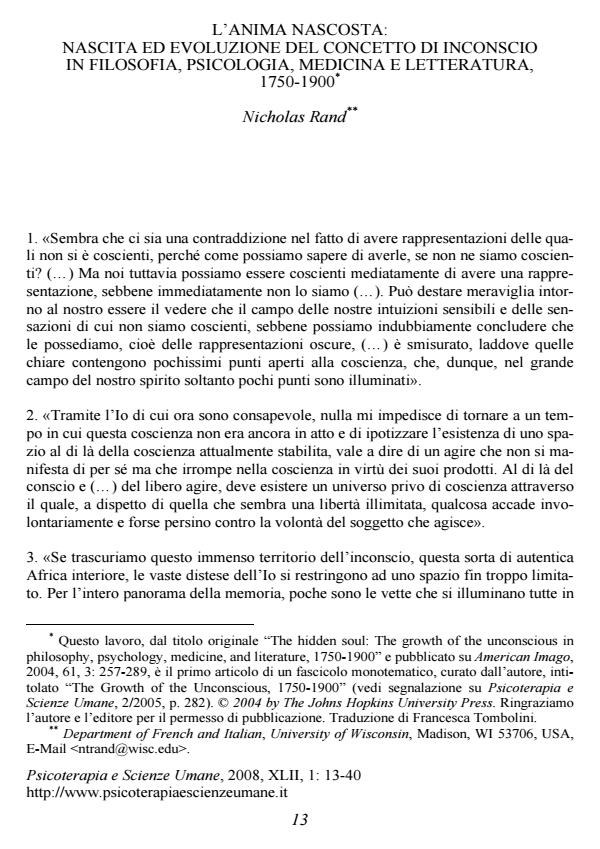L'anima nascosta: nascita ed evoluzione del concetto di inconscio in filosofia, psicologia, medicina e letteratura, 1750-1900
Journal title PSICOTERAPIA E SCIENZE UMANE
Author/s Nicholas Rand
Publishing Year 2008 Issue 2008/1
Language Italian Pages 28 P. 13-40 File size 198 KB
DOI
DOI is like a bar code for intellectual property: to have more infomation
click here
Below, you can see the article first page
If you want to buy this article in PDF format, you can do it, following the instructions to buy download credits

FrancoAngeli is member of Publishers International Linking Association, Inc (PILA), a not-for-profit association which run the CrossRef service enabling links to and from online scholarly content.
The author traces the growth of the unconscious in philosophy, psychology, medicine, and literature from 1750 to 1900, touching on the contributions of Leibniz, Locke, Maine de Biran, Johann Friedrich Herbart, and Jean-Paul Richter. He then gives conceptual preambles to the following seven historical articles published in a special issue of American Imago (no. 3/2004) titled The Growth of the Unconscious, 1750-1900: Johann George Sulzer: Unconscious prejudice and its elimination (1759); Dugald Stewart: Free association in waking and dreaming (1792); Jacob Bernays: Aristotle’s theory of medical catharsis for the soul and the origins of the talking cure (1857); John Daniel Morell and automatic or preconscious mental activity (1862); Eneas Sweetland Dallas and the creative power of the hidden soul (1866); Francis Galton and the investigation of the unconscious through free association (1879); Harald Höffding’s synthesis of the role of the unconscious in psychology (1881). [KEY WORDS: unconscious, history, psychology, catharsis, aesthetics]
Nicholas Rand, L'anima nascosta: nascita ed evoluzione del concetto di inconscio in filosofia, psicologia, medicina e letteratura, 1750-1900 in "PSICOTERAPIA E SCIENZE UMANE" 1/2008, pp 13-40, DOI: